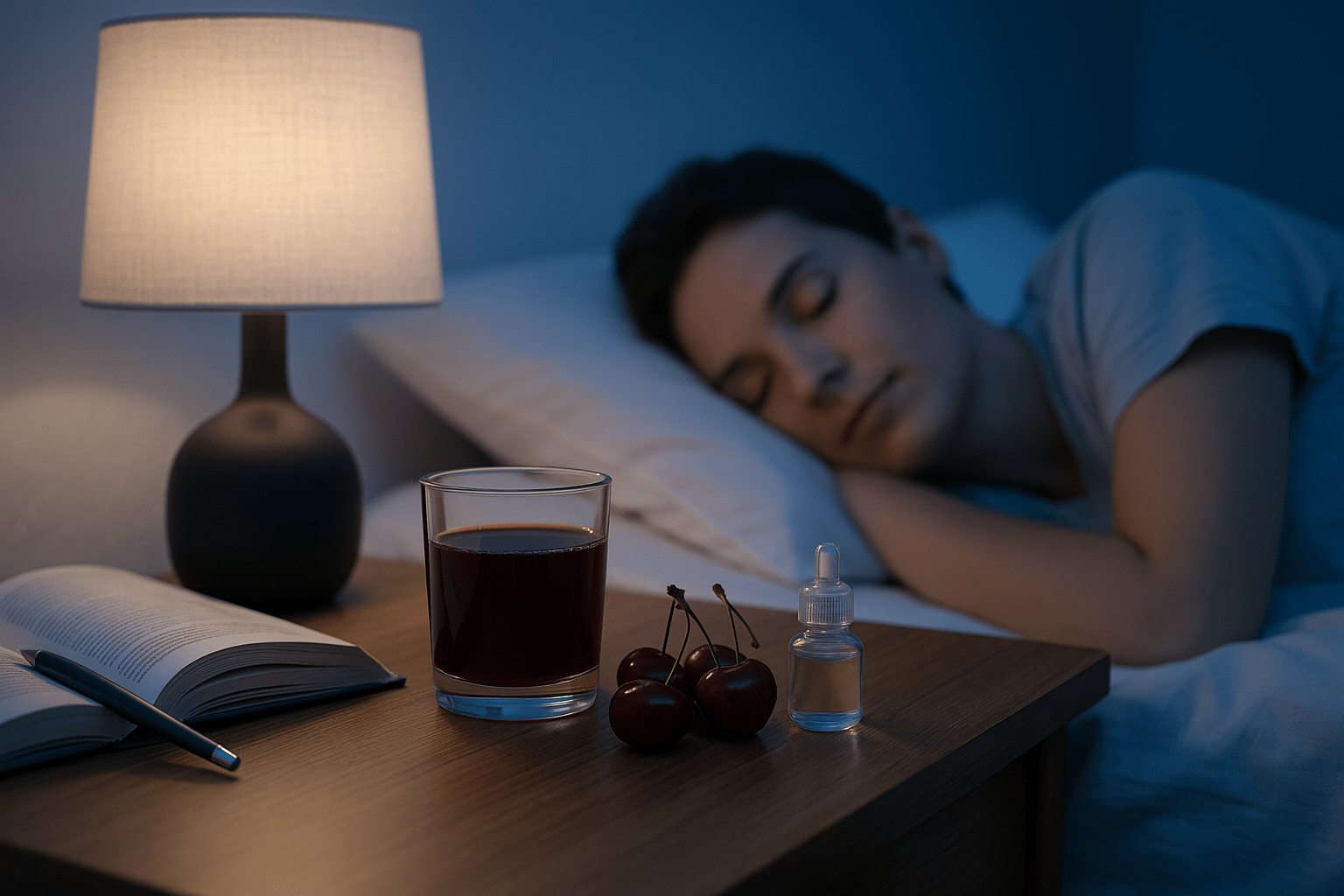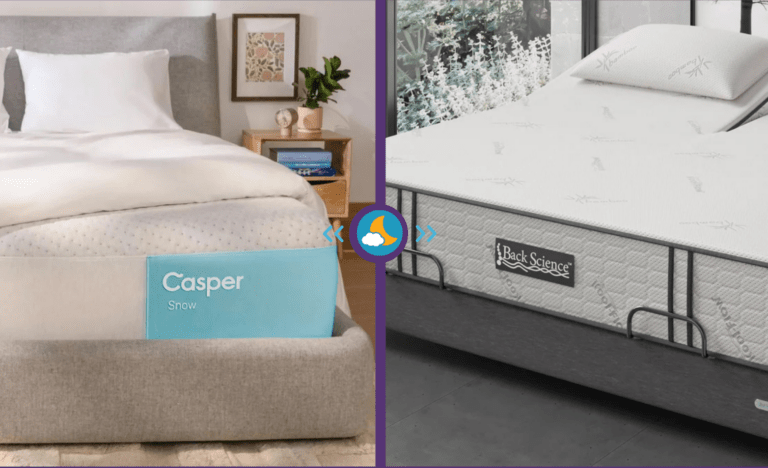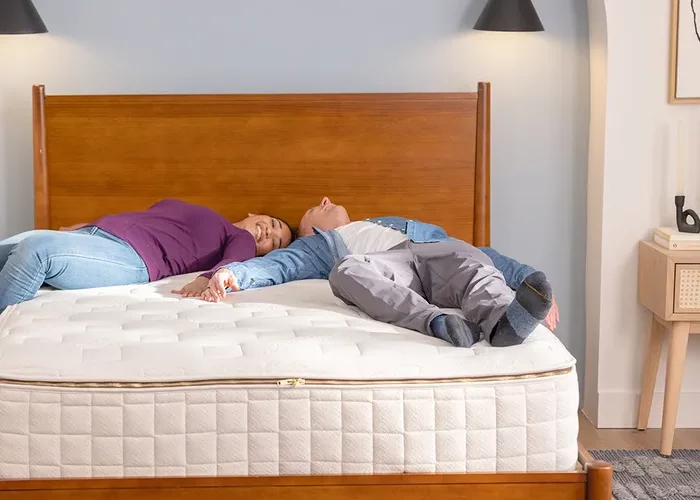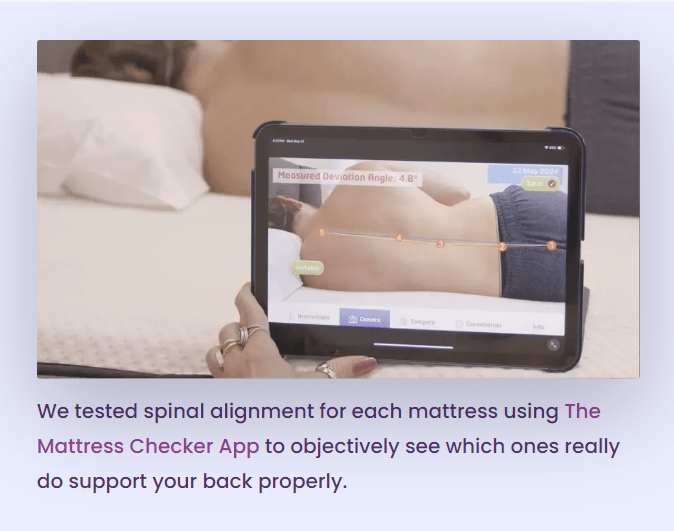
Struggling to drift off at night? You’re not alone...
Millions struggle with racing thoughts, stress, or poor sleep environments that keep them awake. While most people fall asleep within 5–20 minutes, taking longer may signal your routine needs a reset. In our latest article, Sleep Hacks: 12 Science-Backed Ways to Fall Asleep Faster, we share proven methods—from journaling and breathwork to natural melatonin sources and optimizing bedroom temperature—to help you relax and rest better.
12 Science-Backed Ways to Fall Asleep Faster
Falling asleep shouldn’t feel like a marathon. Yet, for many, the struggle to drift off stretches into hours of frustration.
According to behavioral sleep medicine psychologist Michelle Drerup, PsyD, the average person takes 5 to 20 minutes to fall asleep, a period known as sleep latency (Drerup, 2022). If you’re tossing and turning beyond that, you’re not alone. Difficulty falling asleep can stem from stress, poor sleep hygiene, or even an underlying sleep disorder.
The key to falling asleep faster is relaxation, but achieving it requires intention. Below are 12 evidence-based sleep hacks to help you fall asleep (or return to sleep) more quickly. These strategies, grounded in science, cater to different needs-whether you’re battling racing thoughts, a distracting environment, or physical tension. Try one or combine several to create a personalized bedtime routine.
1. Journal to Clear Your Mind
Racing thoughts can hijack your ability to relax. Journaling before bed helps offload worries and organize tasks, reducing anxiety that keeps you awake. Research shows expressive writing improves sleep quality by processing emotions and reducing stress (Pennebaker, 1997).
How to Do It:
- Spend 5-10 minutes writing in a notebook (avoid screens to limit blue light exposure).
- Jot down worries, tasks for tomorrow, or reflections on your day.
- Try “brain dumping” everything on your mind or making a structured to-do list.
- Keep your journal by your bed for middle-of-the-night thoughts.
Tip: If journaling feels overwhelming, start with a single sentence about something you’re grateful for to shift your mindset.
2. Drink Organic Cherry Juice for Natural Melatonin
Cherries, particularly tart cherries, are a natural source of melatonin, the hormone that regulates sleep in response to darkness. Studies show tart cherry juice increases melatonin levels and improves sleep duration and quality (Pigeon et al., 2010). Unlike melatonin supplements, cherries offer a food-based approach with minimal side effects.
How to Do It:
- Drink 8 ounces of low-sugar tart cherry juice 1-2 hours before bed.
- Alternatively, eat a handful of fresh or dried tart cherries as a bedtime snack.
- Avoid sugary cherry juices, as excess sugar can disrupt sleep.
Caution: Consult a doctor if you’re on medications or have health conditions, as cherries may interact with certain drugs.
3. Practice Breathing Exercises
Breathing exercises calm the nervous system, lowering heart rate and promoting relaxation. Techniques like the 4-7-8 method activate the parasympathetic nervous system, signaling your body to rest (Russo et al., 2017). They’re ideal for in-bed use, requiring no equipment. Three Techniques to Try:
- Box Breathing: Inhale for 4 seconds, hold for 4, exhale for 4, and pause for 4. Repeat 4-6 times.
- 4-7-8 Method: Exhale fully, then inhale through your nose for 4 seconds, hold for 7, and exhale for 8. Repeat 4 times.
- Diaphragmatic Breathing: Place one hand on your chest and one on your belly. Inhale deeply for 4-6 seconds, expanding your belly (not chest), then exhale slowly. Do 8-10 breaths.
Tip: Focus on the sensation of your breath to anchor your mind away from distractions.
4. Silence Notifications and Limit Devices
Smartphones and tablets emit blue light, which suppresses melatonin production and delays sleep onset (Harvard Health Publishing, 2020). Scrolling through apps or checking notifications also stimulates your brain, making relaxation harder. How to Do It:
- Put devices in airplane mode or enable “Do Not Disturb” 1-2 hours before bed.
- Store phones and tablets out of reach, preferably outside the bedroom.
- Use a traditional alarm clock instead of your phone to avoid temptation.
Bonus: If you must use a device, enable blue light filters or wear blue-light-blocking glasses.
5. Choose a Firmer Pillow
An unsupportive pillow can cause discomfort, leading to tossing and turning. A firmer pillow that aligns your head, neck, and spine may improve sleep posture and relaxation, especially for side or back sleepers (Gordon et al., 2011). Check out our 7 top-rated pillows reviewed, rated, and tested here!
How to Do It:
- Assess your pillow: If it’s too soft or flat, replace it with a medium-firm option.
- Choose a pillow suited to your sleep position (e.g., firmer for side sleepers, softer for stomach sleepers).
- Test pillows with a return policy, as comfort is subjective.
Tip: Replace pillows every 1-2 years to maintain support and hygiene.
6. Sleep in a Cooler Room
Your core body temperature naturally drops at night, signaling sleep readiness. A cooler room (60-67°F or 15-19°C) mimics this process, helping you fall asleep faster and improving sleep quality (National Sleep Foundation, 2020).
How to Do It:
- Set your thermostat to 60-67°F.
- Use breathable bedding, like cotton or linen sheets, and avoid heavy blankets.
- Take a warm bath 1-2 hours before bed to trigger a rapid body temperature drop afterward.
Tip: If you prefer warmth, use lightweight layers to avoid overheating.
7. Use Lavender Essential Oil
Lavender’s calming scent, driven by the compound linalool, reduces anxiety and enhances deep sleep. Studies show lavender aromatherapy improves sleep quality in both men and women (Goel et al., 2005).
How to Do It:
- Spritz lavender essential oil (diluted with water) on your pillow or bedding.
- Use a diffuser with 5-10 drops of lavender oil 30 minutes before bed.
- Apply a diluted lavender roller to your wrists or temples (test for skin sensitivity first).
Caution: Ensure oils are high-quality and avoid ingestion without medical guidance.
8. Avoid Clock-Watching
Checking the time while struggling to sleep heightens anxiety, making relaxation harder. This behavior, known as “clock-watching,” can create a cycle of stress (Espie, 2002).
How to Do It:
- Turn clocks away from your view or cover digital displays.
- Keep your phone or alarm clock out of reach to discourage checking.
- If you wake up, resist the urge to look at the time-focus on a relaxation technique instead.
Tip: Use a gentle, non-intrusive alarm to wake up, reducing reliance on your phone.
9. Read a Physical Book
Reading a physical book (not an e-reader) relaxes the mind and tires the eyes, promoting sleepiness. Unlike screens, books don’t emit blue light, which can delay melatonin release (Harvard Health Publishing, 2020).
How to Do It:
- Choose a calming book-fiction or light nonfiction works best.
- Read for 10-20 minutes in dim lighting to avoid overstimulation.
- Keep a small book light or use a low-wattage bedside lamp.
Tip: Avoid thrillers or emotionally intense books that might keep you engaged.
10. Visualize Your Happy Place
Guided imagery distracts your mind from stress by engaging your senses in a calming mental scene. This technique reduces anxiety and promotes relaxation, helping you fall asleep faster (Jerath et al., 2014).
How to Do It:
- Picture a peaceful place (e.g., a beach, forest, or cozy room).
- Imagine details for each sense: the sound of waves, the smell of pine, the feel of soft sand.
- Spend 5-10 minutes building the scene while breathing slowly.
Popular Scenes: A quiet beach, a mountain cabin, a flowing river, or a starry night sky.
11. Try Progressive Muscle Relaxation (PMR)
PMR involves tensing and releasing muscle groups to release physical tension and calm the mind. Research shows PMR reduces insomnia symptoms and improves sleep onset (McCall et al., 2019).
How to Do It:
- Lie down and close your eyes.
- Starting at your toes, tense each muscle group for 5 seconds, then release slowly.
- Move upward through your feet, legs, abdomen, arms, and face.
- Breathe deeply throughout, completing the cycle in 5-10 minutes.
Tip: Pair PMR with slow breathing for enhanced relaxation.
12. Use Cognitive Shuffling
Cognitive shuffling, developed by Dr. Luc Beaudoin, scrambles your thoughts to disrupt overthinking and mimic the random mental state of falling asleep. This technique is especially effective for racing minds (Beaudoin, 2013).
How to Do It:
- Think of a random, neutral word (e.g., “apple”).
- Visualize a series of unrelated images starting with that word (e.g., apple, cloud, shoe).
- Keep generating new, disconnected images slowly until you feel drowsy.
Tip: If visualization is hard, mentally list random objects or scenes in a slow rhythm.
Understanding Sleep Deprivation vs. Sleep Deficiency
Sleep deprivation occurs when you don’t get enough sleep (e.g., less than 7-9 hours for most adults). Sleep deficiency, however, is broader-it includes insufficient sleep, poor-quality sleep, or sleep disorders that prevent restorative rest (National Institutes of Health, 2019). Both can harm your health, but their signs differ:
Signs of Sleep Deficiency:
- Difficulty focusing or remembering
- Mood swings or irritability
- Reliance on caffeine or naps
- Dozing off during quiet moments (e.g., reading or watching TV)
Falling asleep instantly may indicate sleep deprivation, as your body is desperate for rest. Conversely, taking longer to fall asleep doesn’t always mean poor sleep-if you wake refreshed, your sleep quality may be adequate. The goal is consistent, high-quality sleep tailored to your needs.
Final Thoughts
High-quality sleep is as vital as food and water, yet it’s often neglected. Falling asleep faster requires managing stress, optimizing your environment, and building healthy bedtime habits. Experiment with these 12 sleep hacks to find what works for you. Track your progress over a few weeks, noting which strategies reduce your sleep latency and improve how you feel upon waking. If you consistently struggle to fall asleep or feel unrested despite adequate sleep time, consult a doctor or sleep specialist. Conditions like insomnia, sleep apnea, or anxiety may require professional intervention. Prioritize sleep today-it’s an investment in your health and happiness.
REFERENCES
Beaudoin, L. P. (2013). Cognitive shuffling: A novel approach to sleep onset. Simon Fraser University. https://www.sfu.ca/~lpb/research/cognitive-shuffling/
Drerup, M. (2022, March 10). If you fall asleep instantly, is that a good thing? Cleveland Clinic. https://health.clevelandclinic.org/if-you-fall-asleep-instantly-is-that-a-good-thing-2/
Espie, C. A. (2002). Insomnia: Conceptual issues in the development, persistence, and treatment of sleep disorder in adults. Annual Review of Psychology, 53(1), 215–243. https://doi.org/10.1146/annurev.psych.53.100901.135243
Goel, N., Kim, H., & Lao, R. P. (2005). An olfactory stimulus modifies nighttime sleep in young men and women. Chronobiology International, 22(5), 889–904. https://doi.org/10.1080/07420520500263276
Gordon, S. J., Grimmer-Somers, K., & Trott, P. (2011). Pillow use: The behavior of cervical stiffness, headache and scapular/arm pain. Journal of Manipulative and Physiological Therapeutics, 34(8), 506–513. https://doi.org/10.1016/j.jmpt.2011.09.006
Harvard Health Publishing. (2020, July 7). Blue light has a dark side. Harvard Medical School. https://www.health.harvard.edu/staying-healthy/blue-light-has-a-dark-side
Jerath, R., Crawford, M. W., Barnes, V. A., & Harden, K. (2014). Self-regulation of breathing as a primary treatment for anxiety. Applied Psychophysiology and Biofeedback, 39(3–4), 193–202. https://doi.org/10.1007/s10484-014-9263-2
McCall, W. V., Blocker, J. N., D’Agostino, R., Kimball, J., Boggs, N., Lasater, B., & Rosenquist, P. B. (2019). Treatment of insomnia with progressive muscle relaxation and biofeedback. Journal of Clinical Sleep Medicine, 15(3), 429–437. https://doi.org/10.5664/jcsm.7672
National Institutes of Health. (2019). What is sleep deficiency? https://www.nhlbi.nih.gov/health-topics/sleep-deprivation-and-deficiency
National Sleep Foundation. (2020). The best temperature for sleep. https://www.sleepfoundation.org/bedroom-environment/best-temperature-for-sleep
Pennebaker, J. W. (1997). Writing about emotional experiences as a therapeutic process. Psychological Science, 8(3), 162–166. https://doi.org/10.1111/j.1467-9280.1997.tb00403.x
Pigeon, W. R., Carr, M., Gorman, C., & Perlis, M. L. (2010). Effects of a tart cherry juice beverage on the sleep of older adults with insomnia: A pilot study. Journal of Medicinal Food, 13(3), 579–583. https://doi.org/10.1089/jmf.2009.0096
Russo, M. A., Santarelli, D. M., & O’Rourke, D. (2017). The physiological effects of slow breathing in the healthy human. Breathe, 13(4), 298–309. https://doi.org/10.1183/20734735.009817
Saatva. (2021a, October 12). How to fall asleep fast. https://www.saatva.com/blog/how-to-sleep-fast/
Saatva. (2021b, November 15). How lavender improves sleep quality. https://www.saatva.com/blog/how-lavender-improves-sleep-quality/
Sleep Foundation. (2023, March 17). How to fall asleep fast. https://www.sleepfoundation.org/sleep-hygiene/how-to-fall-asleep-fast
MORE SLEEP TIPS:
-
Sagittarius and the Cell Salt Silicea
Sleep Examiner Rating:
-
How to Hack Your Sleep: 12 Ways to Sleep Better
Sleep Examiner Rating:
-
Back Science Series 2 vs. Casper Snow Hybrid Mattress Comparison
Sleep Examiner Rating:
-
The Truth About Latex Mattresses
Sleep Examiner Rating:
-
Discover the Best 100% Latex-Free Mattresses
Sleep Examiner Rating:






